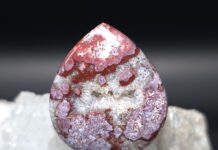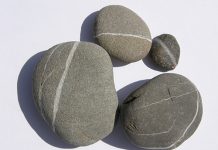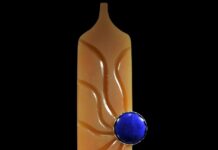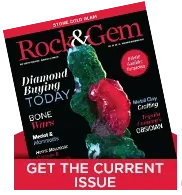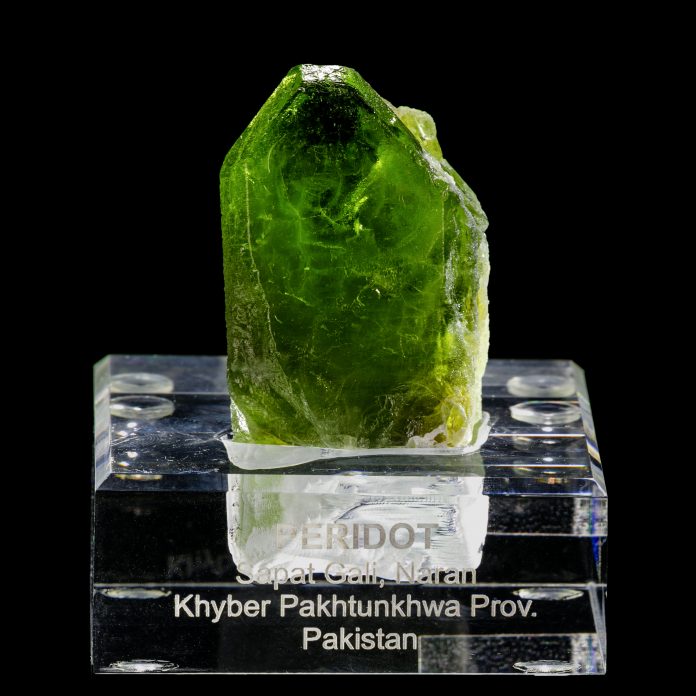
Peridot gemstone is the bright green gem-quality variety of the mineral forsterite, a magnesium silicate. Both are commonly referred to as “olivine,” which is intended to refer to samples with a composition between forsterite and fayalite (an iron silicate). While many gemstones can be found in multiple colors, peridot occurs in shades that range from yellow-green to olive or brownish-green. The gem’s green color is because of its iron content, with higher concentrations producing deeper hues.
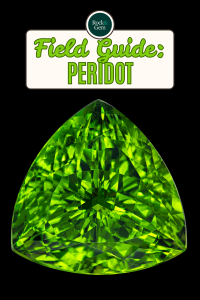
How Peridot Forms
Peridot forms deep within the Earth’s mantle, between 20 and 55 miles below the surface. Volcanic activity, particularly basaltic lava flows, brings peridot to the surface. It grows under high temperatures and pressures and is associated with mafic and ultramafic igneous rocks. Rarely, but famously, peridot is also found in pallasite (stony-iron) meteorites, remnants of the early solar system that fell in Argentina and Antarctica. It has also been known to “rain” peridot as the material is ejected into the sky during volcanic activity in ‘volcanic bombs’ and falls back to Earth.
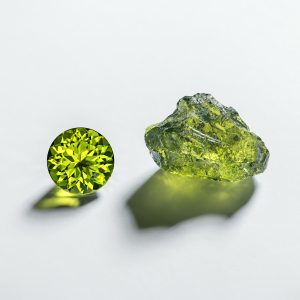
Where to Find Peridot Gemstone Deposits
Major deposits of peridot exist in the United States (notably on the San Carlos Apache Reservation in Arizona), Pakistan’s Kohistan region, Myanmar (Burma) and China. Some of the finest specimens come from Pakistan’s Supat Valley, where crystals can exceed 100 carats. Smaller occurrences are found in Egypt, Tanzania and Vietnam.
Varieties of Peridot Gemstone
Although all gem-quality olivine is classified as peridot, slight variations in color and clarity exist because of trace elements and origin. Pakistani peridot tends to be rich, lime green and highly transparent, while Arizona peridot often has a more yellowish tone.
How Peridot Is Used
Peridot is primarily used in jewelry, including rings, pendants and earrings. With a Mohs hardness of 6.5 to 7, it is suitable for everyday wear. Its vibrant green hue and relative affordability make it popular as an alternative to emerald.
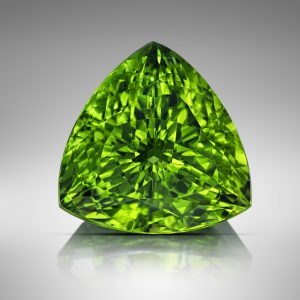
Arkenstone, iRocks.com
History of the Peridot Gemstone
Historically mined on Zabargad Island in the Red Sea since at least 1500 B.C., peridot was prized by ancient Egyptians, who called it the “gem of the sun.” Medieval Europeans believed it could dispel nightmares and protect against evil spirits. Misidentified for centuries, many “emeralds” in historical artifacts have later been confirmed as peridot.
Metaphysical Properties of Peridot Gemstone
In metaphysical traditions, peridot is associated with abundance, emotional healing and protection. It is said to enhance confidence and reduce stress by opening the heart and solar plexus chakras.
Peridot Gemstone: Final Thoughts
Peridot gemstones offer a captivating blend of natural science, cultural history, and metaphysical allure. Whether formed deep within Earth’s mantle or delivered by meteorites, their vivid green beauty continues to inspire collectors, jewelers, and spiritual seekers alike.
This article about peridot previously appeared in Rock & Gem magazine. Story by Dr. Stuart Mills and Pam Freeman. Click here to subscribe.




